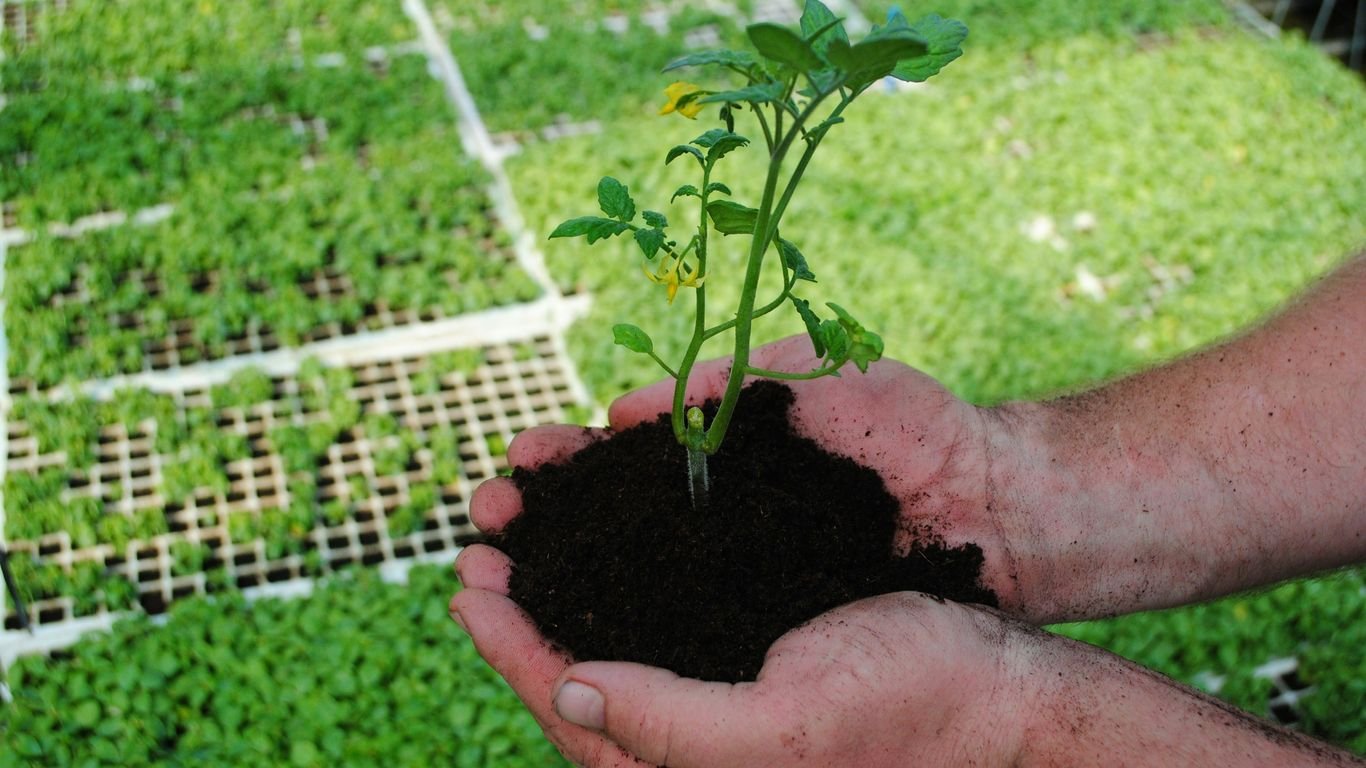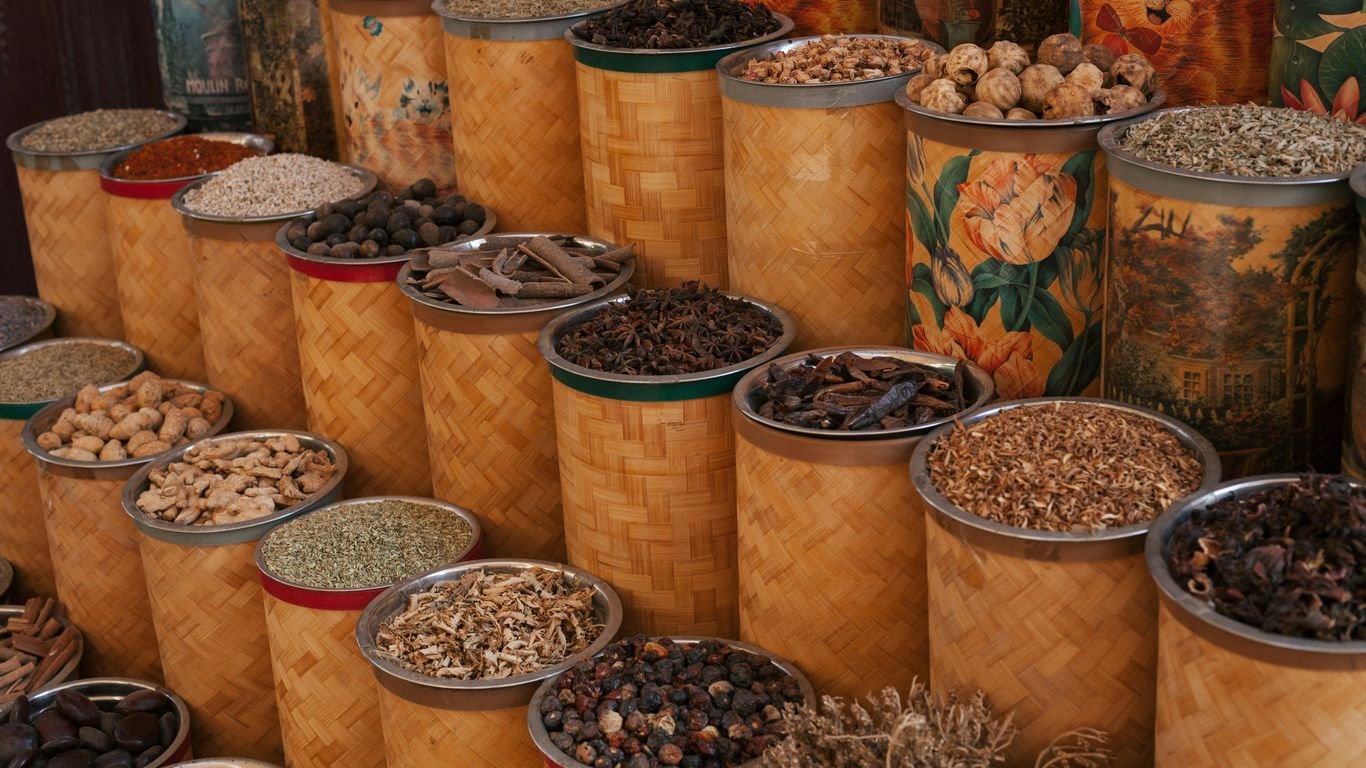Zone 8 February Planting Calendar: Herbs, Greens, and Early Crops

February in Zone 8 is a time of anticipation and action for us gardeners. The chill is starting to break, and while it might still feel a bit early, we can actually get a lot done this month. Thinking about our zone 8 February planting calendar now means we’ll be ahead of the game when spring truly kicks into gear. We’ll cover what to sow directly in the ground, which seeds to start indoors, and even get a head start on some perennial planting.
Key Takeaways
- We can begin direct sowing cool-season crops like peas, spinach, radishes, and root vegetables such as carrots and beets in Zone 8 during February.
- It’s time to start seeds indoors for plants that need a longer growing season, including brassicas like broccoli and cauliflower, and herbs with slow germination.
- We should also get perennial plants like strawberries and asparagus crowns into the ground this month to establish them early.
- Before planting, we need to prepare our garden tools and beds, and make sure we have ordered all our seeds for the season.
- Protecting young seedlings from any lingering cold snaps or early pests using row covers or cold frames is important for their survival.
Getting Started With Zone 8 February Planting
February in Zone 8 is a fantastic time to start thinking about the growing season ahead. We’re on the cusp of spring, and while it might still feel a bit chilly, the garden is waking up. This is our chance to get a head start on many crops, setting ourselves up for an abundant harvest later on.
Embrace the Early Season in Zone 8
Zone 8 offers a wonderfully long growing season, with mild winters and relatively early springs. This means we can begin planting much sooner than many other regions. February is prime time for getting cool-season crops started, either directly in the ground or by sowing seeds indoors. It’s all about working with the weather, not against it, to maximize our garden’s potential. We can really get a jump on things this month.
Your Zone 8 February Planting Calendar Kickoff
This month is all about preparation and early sowing. We’ll be looking at direct sowing hardy greens and root vegetables, as well as starting seeds indoors for plants that need a bit more time to mature. Think of it as laying the groundwork for the entire gardening year. Getting these early crops in now means we can enjoy fresh produce sooner.
Planning Your Zone 8 Garden Now
Before we get our hands dirty, a little planning goes a long way. It’s a good idea to sketch out where you want to plant everything, considering crop rotation and companion planting. Also, now is the perfect time to check your tools, clean them up, and make sure they’re ready for action. Ordering seeds is also a priority; popular varieties can sell out fast, so getting your seed orders in early is smart.
Here’s a quick look at what we can be doing:
- Tool Maintenance: Sharpen blades, oil moving parts, and replace any worn-out equipment.
- Seed Inventory: Check what seeds you have and make a list of what you need to buy.
- Garden Layout: Plan where your vegetables, herbs, and flowers will go this season.
February is a month of anticipation in Zone 8. The days are getting longer, and the soil, though still cool, is ready for us to begin its transformation. We can start sowing seeds indoors for many plants, giving them a head start before the last frost.
We’ll be focusing on getting those cool-weather crops going, like peas and onions, and starting some tender seedlings indoors that will be transplanted out later. It’s an exciting time to be in the garden, even if the weather is still a bit unpredictable.
Direct Sowing Cool-Season Crops

February is a fantastic time to get a head start on some of our favorite cool-season crops right in the ground. We can start sowing seeds directly outdoors for a variety of vegetables that actually prefer the cooler weather. This means we’ll be enjoying fresh harvests much sooner than you might think!
Root Vegetables to Sow Now
We can get a jump on root vegetables this month. Think about sowing seeds for beets, carrots, parsnips, and radishes. These guys are pretty forgiving and don’t mind the chill. Just make sure the soil isn’t frozen solid. A good rule of thumb is if you can work the soil without it being a muddy mess, it’s probably ready.
- Beets: Sow seeds about half an inch deep. You can eat both the roots and the greens!
- Carrots: Sow seeds a quarter-inch deep. It’s important to keep the seedbed consistently moist for good germination.
- Parsnips: These take a while to grow, so getting them in early is key. Sow them about half an inch deep.
- Radishes: These are super fast growers, often ready in under a month. Sow them about half an inch deep.
Leafy Greens for Early Harvests
February is also prime time for sowing many leafy greens. We can direct sow spinach, leaf lettuce, mustard greens, and Swiss chard. These will give us delicious salads and additions to our meals in just a few weeks. Remember to keep them watered, especially as they start to sprout.
Don’t forget that many of these greens, like spinach and lettuce, can be harvested multiple times. Just snip off the outer leaves, and the plant will keep producing from the center. This
Starting Seeds Indoors for Later
February is a great time to get a head start on some of those plants that need a little extra warmth or a longer growing season. We can begin sowing seeds indoors for crops that might struggle with our early spring conditions or take a while to get going. This gives them a strong start before we transplant them outside.
Brassicas and Hardy Seedlings
We can start seeds for brassicas like broccoli, cauliflower, and cabbage indoors now. These guys are pretty tough and can handle being transplanted out a bit earlier than more tender plants. It’s also a good time to get a head start on things like celery and head lettuce. Starting these indoors means we’ll have sturdy seedlings ready to go when the weather warms up enough for transplanting.
Herbs with a Long Germination Period
Some herbs, like rosemary, can be notoriously slow to germinate. Starting them indoors in February gives them the time they need to get established. We can also get a jump on snapdragons and begonias, which also benefit from an early start. It’s worth the effort to get these going now so we have a beautiful display or delicious herbs later in the season. You can find a helpful planting calendar to guide your indoor sowing schedule.
Vining Crops That Prefer Individual Pots
Crops like cucumbers, melons, and squash can be started indoors now, but it’s best to sow them directly into individual pots, like peat pots. These plants don’t like their roots being disturbed too much when transplanting, so starting them in their own little homes makes the transition to the garden much smoother. We’ll want to keep an eye on them and pot them up as they grow to give them plenty of space.
- Broccoli
- Cauliflower
- Cabbage
- Celery
- Head Lettuce
- Rosemary
- Snapdragons
- Begonias
- Cucumbers
- Melons
- Squash
Starting seeds indoors requires attention to light, temperature, and moisture. Make sure your seedlings are getting enough light, especially as days get longer. A sunny windowsill can work, but supplemental grow lights are often best for strong, stocky plants. Keep the soil consistently moist but not waterlogged, and pay attention to the specific temperature needs for each type of seed.
Planting Perennials and Fruit
February is a fantastic time in Zone 8 to get a head start on planting some of the longer-term residents of our gardens – the perennials and fruit-bearing plants. While we’re still dealing with cooler weather, the ground is usually workable enough to get these established before the real rush of spring planting begins. Getting these in the ground now gives them a chance to settle their roots before the heat of summer arrives.
Getting Strawberries and Asparagus in the Ground
This is prime time for planting bare-root strawberries and asparagus crowns. You can find these at your local garden center or order them online. When they arrive, they’ll look a bit sad, like sticks with roots, but don’t let that fool you. They’re just dormant and ready to wake up in your garden.
- Strawberries: Dig a hole wide enough to spread out the roots. Make sure the crown (where the leaves emerge) is right at soil level. Too deep, and they might rot; too shallow, and they’ll dry out. Give them a good watering after planting.
- Asparagus: These need a dedicated spot as they’ll be with you for years. Dig a trench about 6-8 inches deep. Place the crowns in the trench with the roots spread out, and cover them with just a couple of inches of soil. As the ferns grow, you’ll gradually fill in the trench.
We usually aim to get these planted early in the month if the weather cooperates. It’s all about giving them the best possible start.
Planting Fruit Bushes and Crowns
Beyond strawberries and asparagus, February is also a good month to plant other fruit bushes like blueberries, raspberries, and blackberries. Like the asparagus, these are often sold as bare-root plants or small potted specimens.
- Blueberries: These guys are a bit picky and need acidic soil. If your soil isn’t naturally acidic, you’ll need to amend it with things like peat moss or sulfur. Plant them at the same depth they were in their pot and water well.
- Raspberries and Blackberries: These are brambles, and they can spread! Give them plenty of space or plan for a support system like a trellis. Plant them so the crown is just at soil level, similar to strawberries.
We like to fertilize these fruit producers before they really start their growth spurt. A gentle, natural nitrogen fertilizer works wonders for asparagus, and a balanced fertilizer is good for the berry bushes.
Preparing for Grape and Berry Harvests
While we’re planting now, it’s also a good time to think about future harvests. If you’re planting grapes, consider where they’ll grow and how you’ll support them. Grapevines need sturdy trellises or arbors.
For existing berry bushes, especially raspberries, it’s time for a bit of pruning. If you have raspberry canes that produced fruit last year, they should have been cut down after harvest. If you didn’t get to it, now’s the time. Canes that will produce this year’s crop can be pruned back by about a quarter to encourage bushier growth and better fruit production.
Thinking about fruit plants means thinking long-term. These aren’t annuals you plant and harvest in a few months. They’re investments in future deliciousness, so giving them the right start in February pays off for years to come. We always try to get our pruning and planting done before the real push of spring growth begins, usually by mid-March at the latest.
It’s also a good idea to get your garden notebook out and make notes about where you’re planting everything. This helps us remember varieties and track their progress year after year.
Essential Garden Preparations

As we gear up for the planting season in Zone 8, it’s a smart move to get our tools and garden beds in top shape. We want to make sure everything is ready to go so we can hit the ground running when the time is right.
Tool Maintenance for the Season Ahead
Before we start digging and planting, let’s give our tools some love. A little cleaning and sharpening now will save us a lot of frustration later. We should take our shovels, hoes, and trowels and give them a good scrub to get off any caked-on dirt. Then, a quick wipe-down with a bit of oil will keep rust at bay. Sharpening the edges of our digging tools will make them cut through the soil much easier. If we have any gas-powered equipment, like a tiller or mower, it’s a good idea to drain the fuel and get it serviced. Repair shops are usually less busy now, so we can get tune-ups and blade sharpening done without a long wait.
Compost Turning and Bed Preparation
Our compost pile is a goldmine of nutrients, and it’s time to give it a good turn. Mixing in some fresh green materials, like kitchen scraps and spent annuals (but no weeds or diseased plants!), with brown materials such as dried leaves will keep it active. We want to keep it moist and turn it regularly. This is also the perfect time to start thinking about our garden beds. If we haven’t already, we should spread a good layer of organic matter, like compost, aged manure, or shredded leaves, over the beds. We can then lightly till it in. This will really improve the soil’s structure and fertility for the coming season.
Ordering Seeds for Success
It might seem early, but now is the time to start looking through seed catalogs and placing our orders. Getting our seed orders in early means we’ll have the best selection and won’t miss out on those unique varieties we’ve been wanting to try. We should consider companies that offer open-pollinated or heirloom seeds if we’re interested in saving seeds for future years. It’s also a good idea to review our garden notes from last year to see what worked well and what we might want to change up for this season.
Protecting Your Young Plants

February might feel like a quiet month in Zone 8, but it’s actually prime time for getting a head start on protecting those tender seedlings and early crops we’re so eager to get into the ground. We need to be ready for whatever the weather throws at us, from unexpected chills to hungry pests.
Row Covers for Pest Protection
Even though it’s still cool, some determined pests are already out and about, looking for their first meal. We can use floating row covers to create a physical barrier against them. These lightweight fabrics are fantastic because they let in sunlight and water while keeping out bugs like flea beetles and cabbage moths that love to munch on our young brassicas. It’s a simple way to give our plants a fighting chance. We just need to make sure we get them on early, right after sowing or transplanting, to be most effective. For things like squash and melons, covering them early can also help prevent damage from cucumber beetles, which can spread diseases. It’s a good idea to check on the plants regularly under the covers, especially if we’re worried about overheating on warmer days. You can find good quality row covers at most garden supply stores, and they’re a worthwhile investment for protecting your early crops from frost damage.
Cold Frames and Low Tunnels
For an extra layer of protection, especially against those late frosts, cold frames and low tunnels are our best friends. A cold frame is basically a mini-greenhouse, perfect for hardening off seedlings or growing hardier greens. We can build them ourselves or buy them, and they really extend our growing season. Low tunnels are similar but use hoops covered with plastic or fabric to create a sheltered space over a larger area. They’re great for protecting rows of peas, spinach, or even young tomato plants if we get an unexpected cold snap. We just need to remember to vent them on sunny days to prevent the plants from getting too hot inside.
Hardening Off Seedlings
This is a step we absolutely cannot skip if we’ve started seeds indoors. Those little plants have been living in a cozy, protected environment, and throwing them straight into the harsh outdoor conditions would be a shock. Hardening off is the process of gradually getting them used to the outside world. We start by moving them to a sheltered spot outdoors for a few hours each day, bringing them in at night. Over a week or two, we increase the time they spend outside and expose them to more direct sun and wind. It’s like building up their resilience. We want to see them looking sturdy and healthy before we even think about planting them in their final garden spots. This gradual introduction helps prevent transplant shock and leads to stronger, more productive plants throughout the season.
Wrapping Up Our February Garden Plans
So there we have it, a look at what we can get started in Zone 8 this February. It feels good to have a plan, right? We’ve got a bunch of greens and herbs we can direct sow, plus some early crops like potatoes and asparagus that can go in the ground. Remember to keep those seeds started indoors for things like okra and squash, as they really don’t like being messed with too much once they’re growing. Don’t forget to jot down what you plant and how it does – it’s a simple step that makes a big difference for next year’s garden. Happy planting, everyone!
Frequently Asked Questions
What are the main things we should focus on planting in Zone 8 during February?
In Zone 8, February is a great time to get a head start! We can begin direct sowing cool-season crops like peas, onions, and various leafy greens such as spinach and lettuce. It’s also the perfect month to get things like potatoes, strawberries, and asparagus crowns into the ground.
When should we start seeds indoors for crops that need more warmth?
For plants that prefer warmer weather later on, like okra, squash, and cucumbers, we can start their seeds indoors in February. It’s best to plant these vining types in individual pots because their roots don’t like to be disturbed when we move them.
Are there any specific herbs we can start indoors in February?
Yes, herbs that take a long time to sprout are good candidates for starting indoors now. Think about herbs like rosemary. Getting them started early gives them plenty of time to grow strong before it’s warm enough to move them outside.
What kind of garden preparations should we be doing in February?
February is a good time to get our tools ready for the season by cleaning and sharpening them. We should also be turning our compost piles and preparing our garden beds by spreading compost. It’s also wise to make sure we’ve ordered all our seeds by now.
How can we protect the young plants we put out early in the season?
To keep our new plants safe, we can use row covers to protect them from early pests like cabbage moths and flea beetles. Cold frames and low tunnels are also excellent ways to shield them from chilly weather and give them a good start.
Besides vegetables and herbs, what else can we plant in February?
We can also get perennial fruits like strawberries and asparagus planted in February. It’s also a good time to plant fruit bushes and crowns. Even though we won’t harvest grapes and berries right away, getting them in the ground now sets us up for future success.






